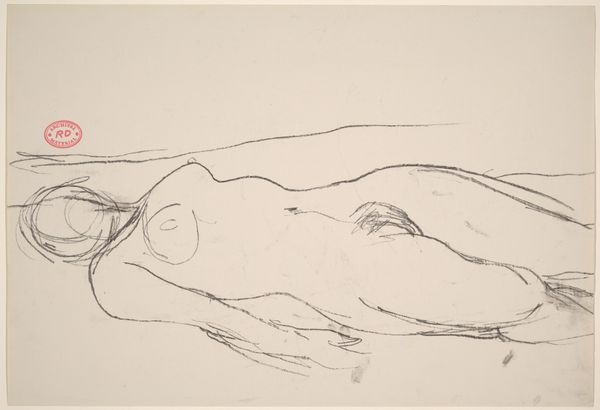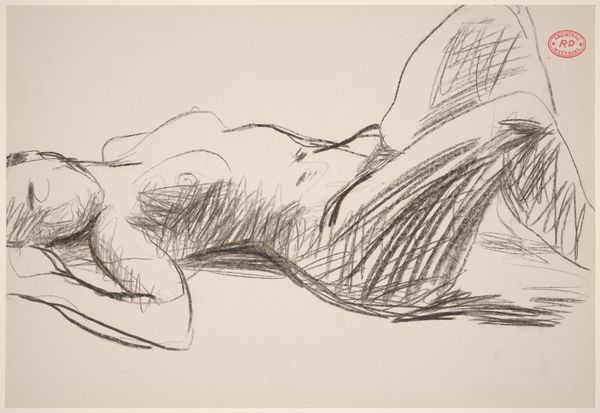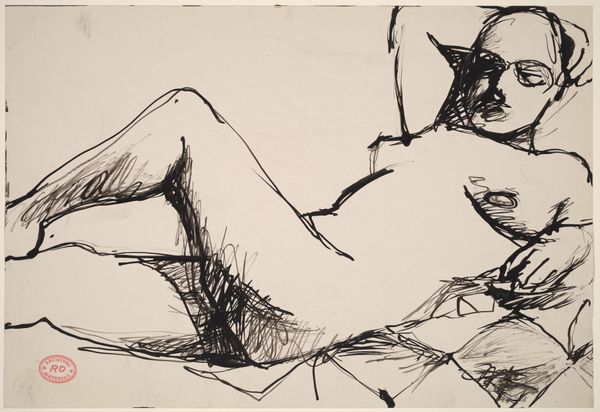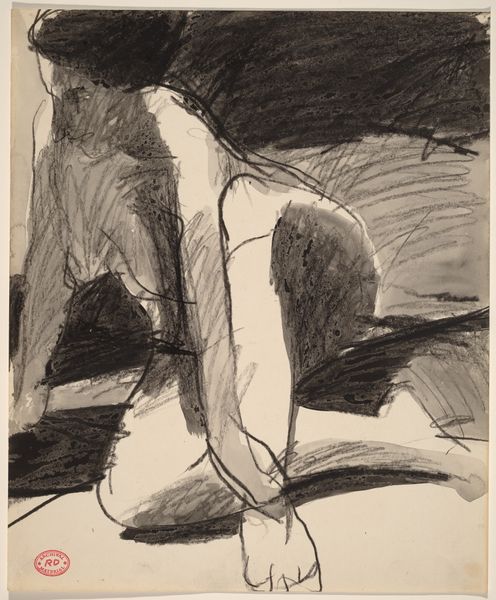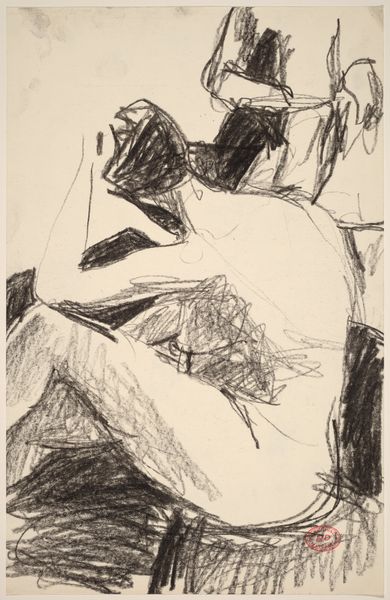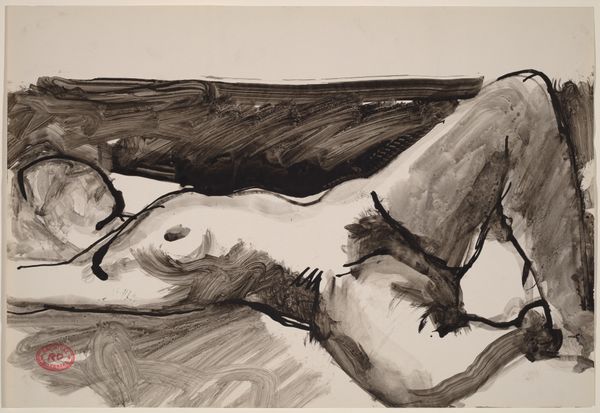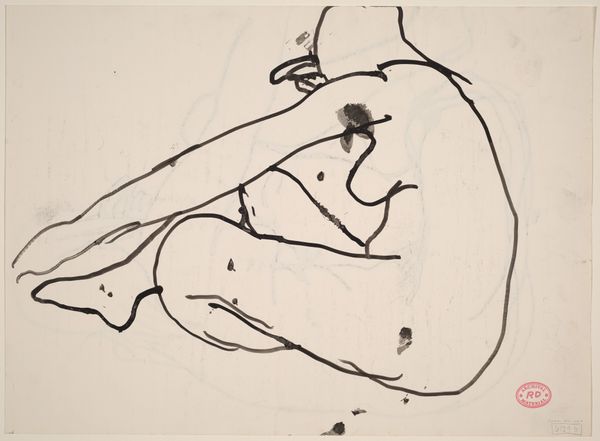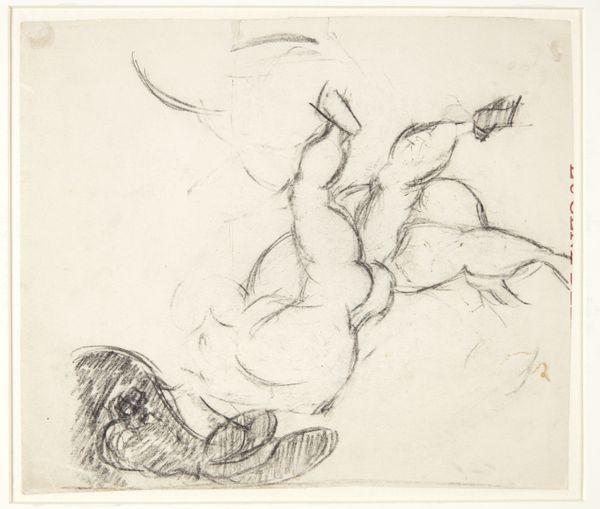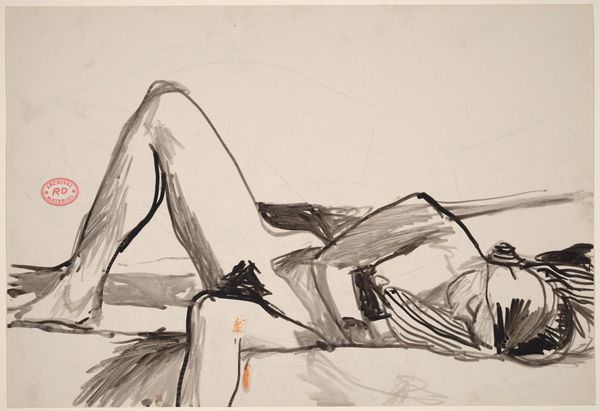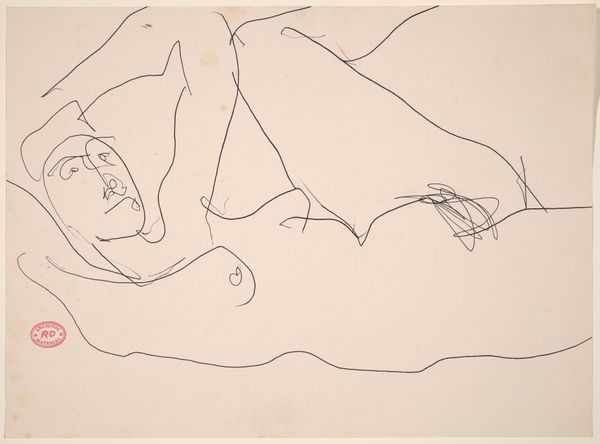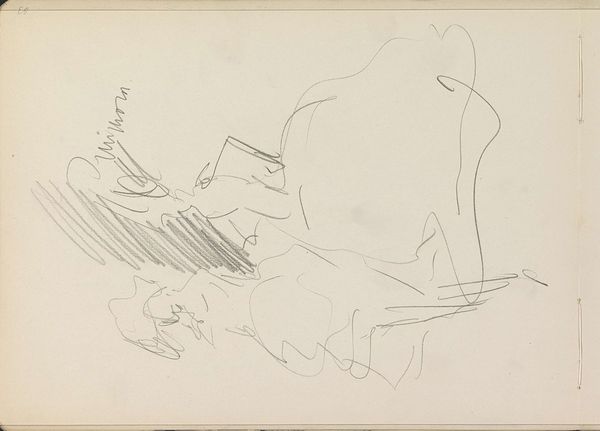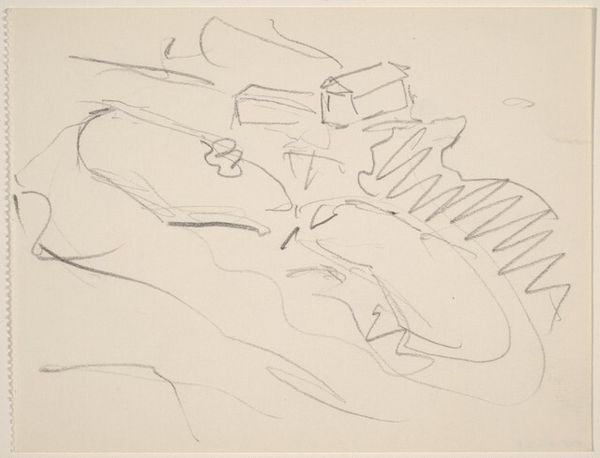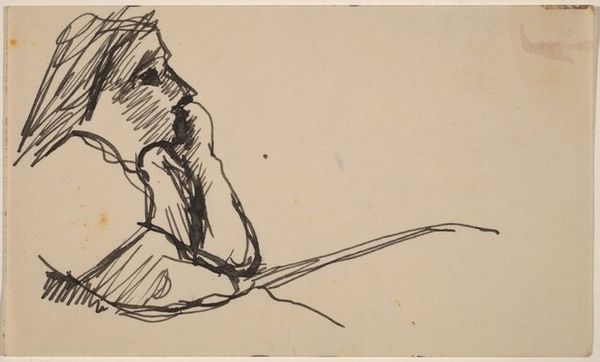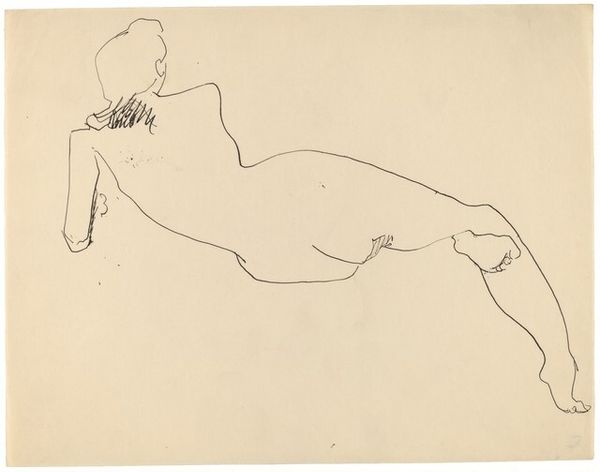![Untitled [side view of sleeping female nude] by Richard Diebenkorn](/_next/image?url=https%3A%2F%2Fd2w8kbdekdi1gv.cloudfront.net%2FeyJidWNrZXQiOiAiYXJ0ZXJhLWltYWdlcy1idWNrZXQiLCAia2V5IjogImFydHdvcmtzLzE1MzJlZWMwLTAzMmEtNDdhYS04NWYwLTlmYTJhMWQ0Y2Q2MC8xNTMyZWVjMC0wMzJhLTQ3YWEtODVmMC05ZmEyYTFkNGNkNjBfZnVsbC5qcGciLCAiZWRpdHMiOiB7InJlc2l6ZSI6IHsid2lkdGgiOiAxOTIwLCAiaGVpZ2h0IjogMTkyMCwgImZpdCI6ICJpbnNpZGUifX19&w=3840&q=75)
drawing
#
landscape illustration sketch
#
drawing
#
light pencil work
#
ink drawing
#
pen illustration
#
pen sketch
#
ink line art
#
bay-area-figurative-movement
#
organic drawing style
#
ink drawing experimentation
#
pen-ink sketch
#
arch
#
sketchbook drawing
Dimensions: overall: 27.7 x 40.6 cm (10 7/8 x 16 in.)
Copyright: National Gallery of Art: CC0 1.0
Editor: Here we have Richard Diebenkorn's "Untitled [side view of sleeping female nude]", created between 1955 and 1967. It's a drawing, a pretty raw sketch really. I'm struck by the sort of vulnerability conveyed in these frantic, almost frantic lines. What do you make of this piece? Curator: This drawing exists within a specific historical context – the post-war American art scene, where artists were grappling with new forms of representation. How does this rapid and "frantic" representation play into anxieties of objectification of the female body, vis-à-vis traditional artistic conventions of rendering the female nude? Do you get the sense that Diebenkorn attempts to deconstruct, or even question, the historical gaze within which the female body has so often been rendered, codified and circulated as visual commodity? Editor: That's a very insightful way of thinking about it. I hadn't considered the historical implications so deeply. It’s almost like he’s avoiding making it too beautiful, too perfect, as a deliberate choice against that historical gaze. But do you think he completely succeeds in subverting those traditions? Or does the simple act of depiction, regardless of style, always fall back into it? Curator: That’s the question, isn’t it? There's an unavoidable power dynamic at play in the act of depiction. By choosing this subject, placing her within the frame, the act itself inherently creates a relationship rooted in established hierarchies. So, where does this tension leave Diebenkorn, as a modern artist and intellectual in a tumultuous, post-war United States, whose personal, sociopolitical and artistic sensitivities must be somehow resolved onto a single page? How are we as viewers made complicit? Editor: It definitely gives me a lot to think about, beyond the surface level of the image. I’ll be considering the socio-political elements now! Curator: I'm glad to hear that. Sometimes the most profound insights arise from exploring the dialogues surrounding the works, not just from what's on the page.
Comments
No comments
Be the first to comment and join the conversation on the ultimate creative platform.
